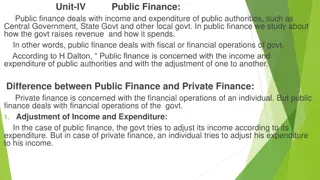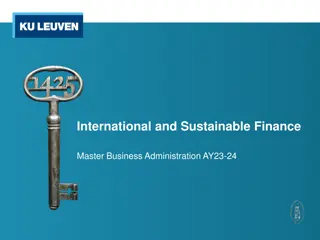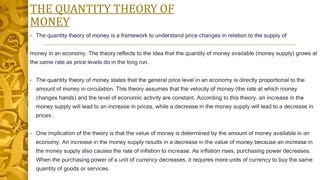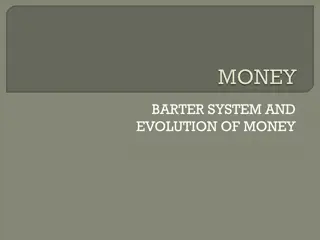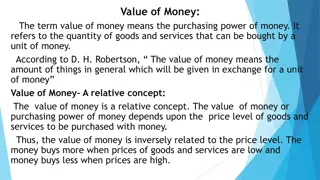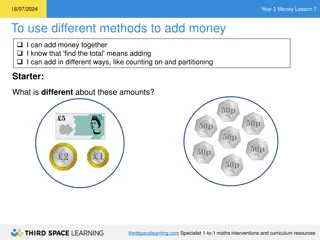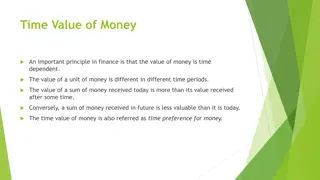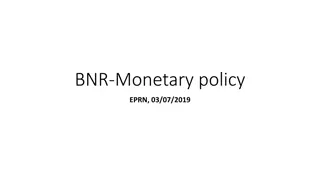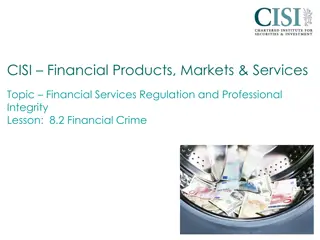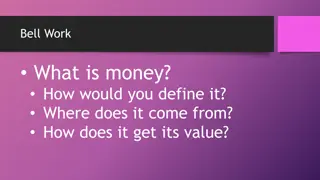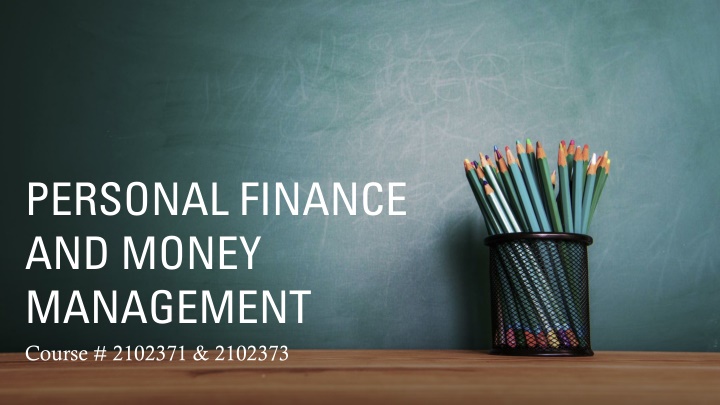
Effective Personal Finance and Money Management Course Overview
Discover the comprehensive Personal Finance and Money Management course covering key topics such as decision-making, budgeting, savings, credit, investments, risk management, and more. Enhance critical thinking, communication, and mathematical skills while integrating real-world applications and technology literacy.
Download Presentation

Please find below an Image/Link to download the presentation.
The content on the website is provided AS IS for your information and personal use only. It may not be sold, licensed, or shared on other websites without obtaining consent from the author. If you encounter any issues during the download, it is possible that the publisher has removed the file from their server.
You are allowed to download the files provided on this website for personal or commercial use, subject to the condition that they are used lawfully. All files are the property of their respective owners.
The content on the website is provided AS IS for your information and personal use only. It may not be sold, licensed, or shared on other websites without obtaining consent from the author.
E N D
Presentation Transcript
PERSONAL FINANCE AND MONEY MANAGEMENT Course # 2102371 & 2102373
COURSE STANDARDS: Personal Finance and Money Management (2102371) includes 92 course standards. Link to CPalms: https://www.cpalms.org/PreviewCourse/Preview/23887 Personal Finance and Money Management Honors (2102373) includes 97 course standards. Link to CPalms: https://www.cpalms.org/PreviewCourse/Preview/23888
INSTRUCTIONAL TIME WILL EMPHASIZE SEVEN AREAS: 1. Exploring how personal financial decisions are made, including understanding how cognitive biases impact decision making. 2. Understanding how wages and salaries are earned, including the types of taxes owed, and evaluating various post-secondary paths and career options. 3. Developing personal or family budgets and exploring how to purchase goods and services by weighing the costs and benefits of those goods and services.
INSTRUCTIONAL TIME WILL EMPHASIZE SEVEN AREAS: 4. Analyzing how interest can be earned by saving now, which allows for the purchase of more goods and services later and understanding how to compare various savings accounts and services offered through financial institutes. 5. Determining advantages and disadvantages of credit accounts that allow for the borrowing of money to purchase goods and services while paying for them in the future, usually with interest, and short- and long-term loans.
INSTRUCTIONAL TIME WILL EMPHASIZE SEVEN AREAS: 6. Developing and understanding of planning for the future through investment accounts and retirement plans and comparing investment choices by analyzing rates of return and risk, while analyzing how diversification is one way to reduce investment risk. 7. Recognizing that there are risks that can result in lost income, health, or identity and that those risks can be accepted, reduced, or transferred to others through the purchase of insurance.
INTEGRATED WITHIN THE COURSE: Critical- thinking, problem-solving, and workforce-literacy skills Communication, reading, and writing skills Mathematical skills Collaboration skills Contextual and applied-learning skills Technology-literacy skills Information and media-literacy skills Civic-engagement skills

